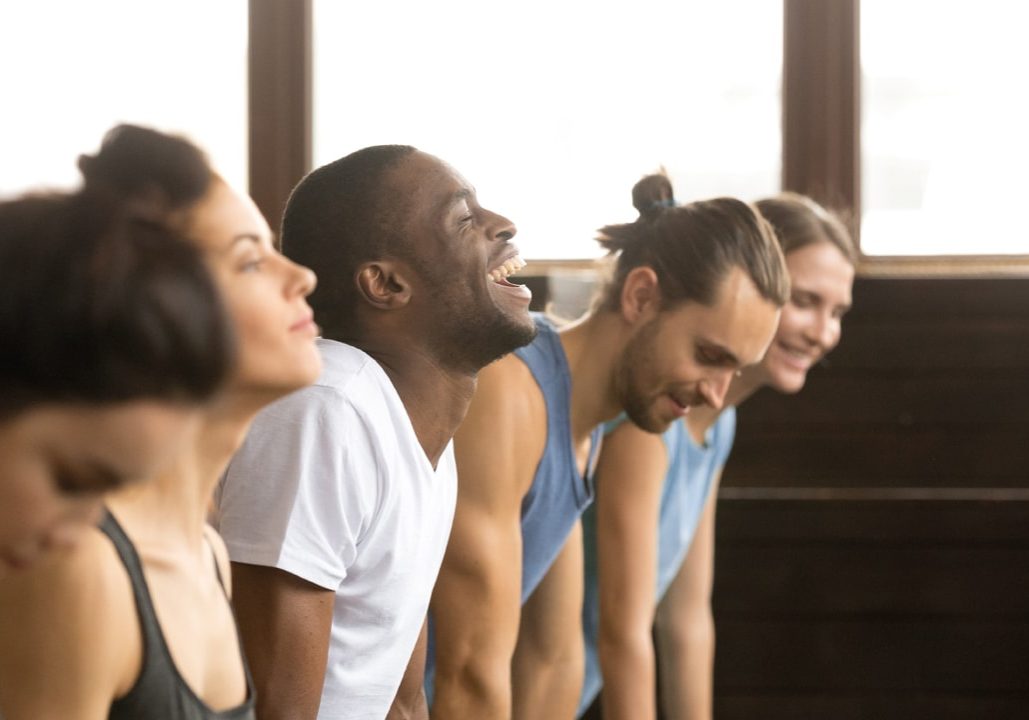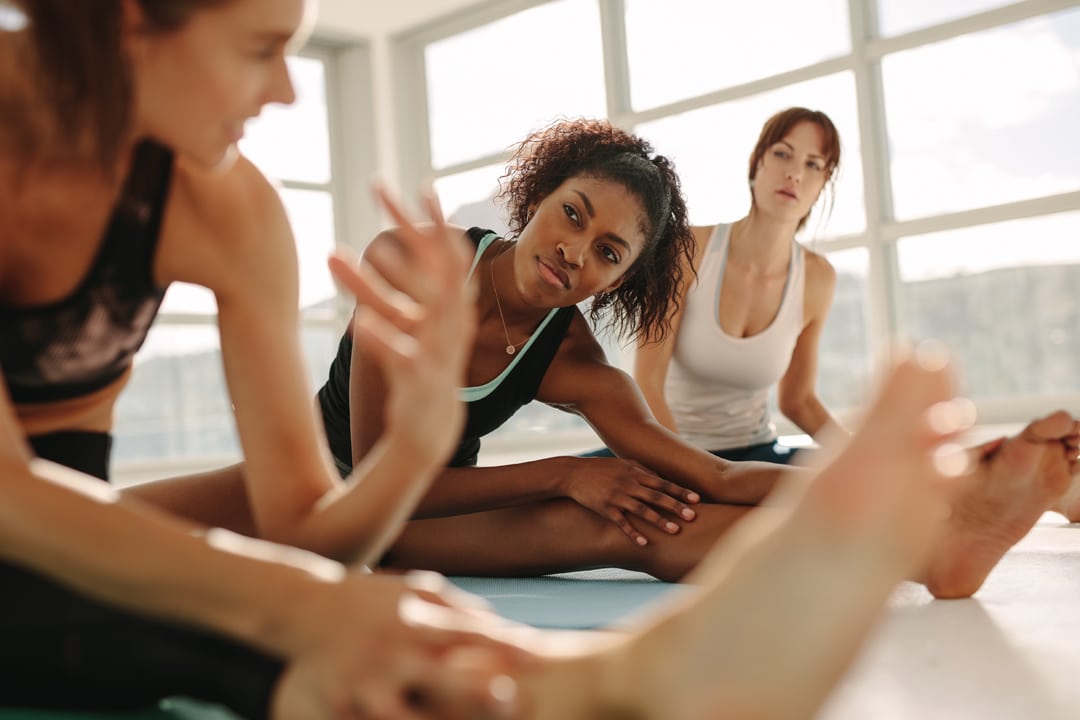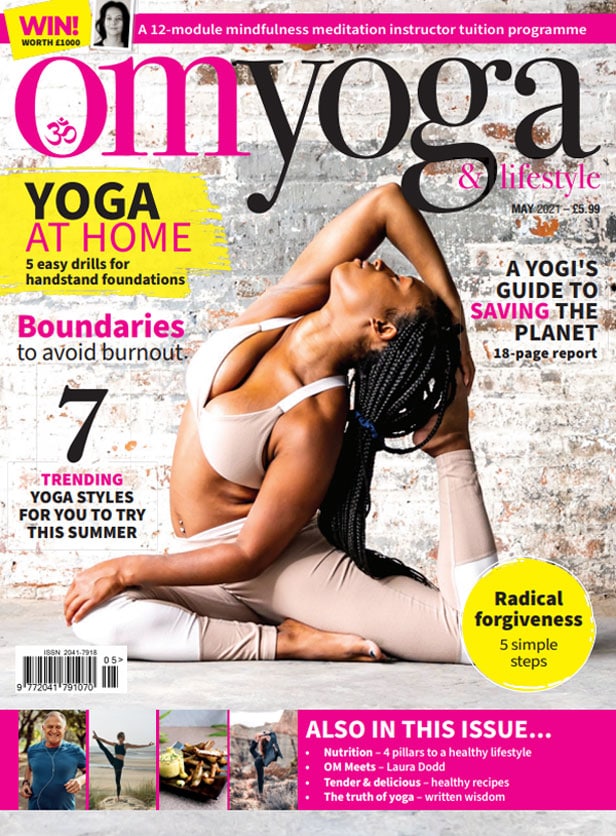
The language of inclusivity
How to incorporate more inclusive language in your yoga teaching. By Belle Roberts
The origins of yoga can be traced back to over 5,000 years ago in northern India. Over time, the practice has evolved in many ways, but in some respects, the language that is used during teaching hasn’t. In many yoga teacher trainings across the world, instructors are told to use their words to guide students through poses and various techniques.
After all, language is meaningful, and as teachers it is our responsibility to align our language to make all students feel welcomed and included. However, I have been in a number of classes where the teacher’s language does not align with the students, resulting in students feeling inherently singled out.
It’s important to create an environment where students feel empowered in their body regardless of age, size, colour and how they identify. As teachers, our language has the ability to cultivate that type of space but also to destroy it.
Here are some suggestions on creating an inclusive space:
Invite rather than instructing
Often yoga classes are taught by using command language, instructing students to “step back”, “lift” and “lower”. Whilst this language is useful especially for those embarking on their yoga journey, it can take the practice out of the students’ hands. It can also exclude students where certain poses or instructions aren’t accessible to them and potentially discourage them from the practice of yoga.
By empowering students through invitational and community-based language, students are able to tap into their own needs and intuition. For example, using language such as “explore how it feels” and “moving at your own time and pace”.
Using language like this gives students autonomy and agency over their own bodies and practice. Ultimately, as teachers, we want students to take ownership of their own practice. By guiding students through invitational language rather than instructing or dictating we’re providing them with a much better and more open experience.
Mindful language
It is common practice in a yoga class to use language based around the level of the class. However, by referring to poses as “beginner” or “advanced” this can discourage individuals and also can imply a state of hierarchy. We can change how we refer to postures by inviting students to try poses such as “if you would like to invite more heat or fire into the body, try this”.
On a similar note, we need to be mindful when we are referring to variations of a pose. By using language such as “full expression of the pose” we are giving the students the impression that the full pose is the correct pose. We will inherently be putting pressure on students to achieve a full pose and suggesting that anything less is not good enough. This can be particularly detrimental to individuals that anatomically will never be able to do a pose.
This doesn’t mean that as teachers we cannot allow our students to practice specific poses, but this does mean that we can offer variations. Once more, it’s about being mindful of the language we use and also coming from a place of invitation.
When we introduce a pose, discuss how we’ll be working on the pose but invite different versions of the pose, or perhaps how in Salabhasana we will try either the arms or the legs, or both together. We are creating a more inclusive practice when we focus on the foundations of a pose and build from there.
As teachers we need to be conscious of our language when we are talking about gender; we cannot assume to automatically know someone’s gender identity. As stated before, we are offering a safe space, inclusive to all identities, therefore using language specifically tailored to men or women can be detrimental to those who identify as something other than male or female.
Whilst we all still have a lot more to learn if we stay clear from making generalisations around gender, we can create a welcoming space to all. Similarly, to this we need to be aware of our language when referring to yoga and the body. Our relationships with our bodies can be deeply personal, so as teachers we need to make sure we never use language that focuses on altering our student’s bodies in any way.
Say less, inquire more
Every individual is unique, which means their yoga practice and what they experience will be different to others in the class. Therefore, how can we expect all individuals to experience the exact same feeling in that same moment? By telling an individual how they should feel we are taking away the experience from them to feel by themselves.
If we start from a place of curiosity it allows students to be more curious and open minded in their own practice. After all, as teachers we are here to offer a safe space for our students, but we are also here to encourage them in their own practice and to make them aware that they are their own best teachers. Only they will know what feels right for them.
The power of silence
Holding silence for your students can be a powerful thing. For some, silence can be uncomfortable, but it provides students an opportunity to reflect, focus and observe inward. In our modern lives it is rare that we are in true silence; often we are pre-occupied by tasks, technology and other people.
By not providing silence to our students, even if it is just for a moment, students can become too confined to the physical realm. As great as music and sound can be in enhancing the overall yoga experience, it can be distracting for students to tune into and listen to what is happening in their own minds and bodies.
By no means am I stating that yoga classes should be free from sound; it is important to use sounds where needed to enhance the experience for our students. However, as teachers it is important for us to reflect on when we are speaking too much. Maybe there are times when we don’t need to explain every aspect of a pose, maybe it is more important to let the silence do the heavy lifting, rather than use filling the space.
Belle Roberts is a yoga teacher and practitioner based in Brighton & Hove. She specialises in building resilience and growth through yoga, meditation and breathwork techniques (Find her on Instagram @belle.roberts_)





